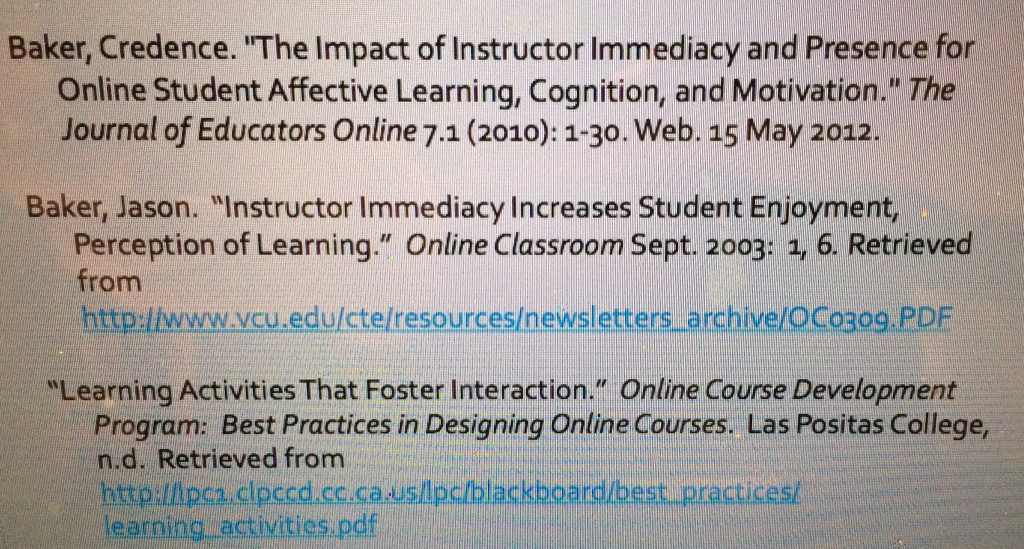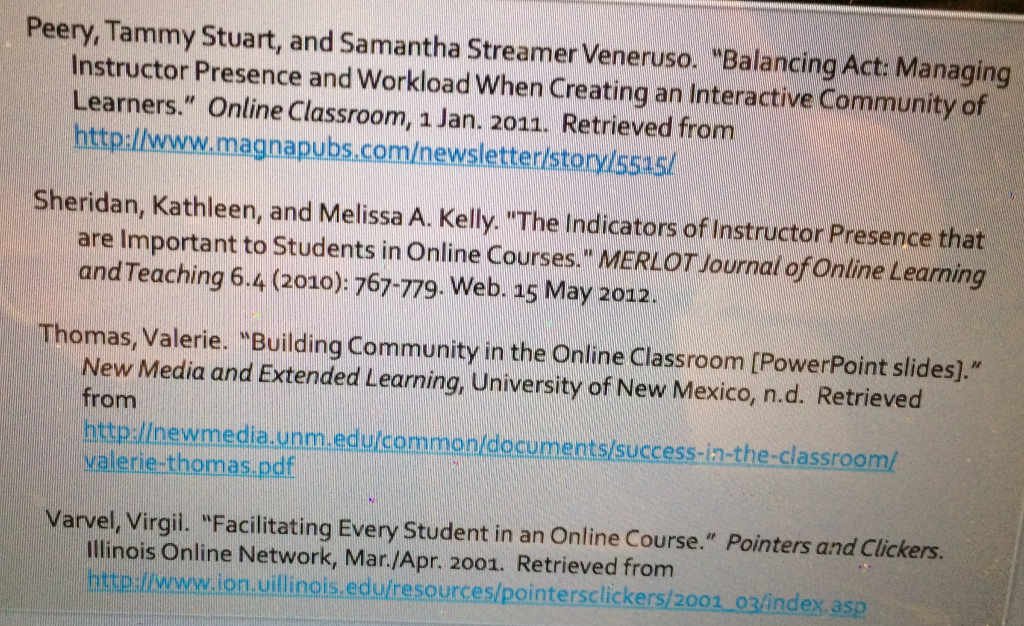In online classes, instructor presence, instructor immediacy, and a sense of community are essential for successful student completion and retention. Improve student participation and satisfaction by making the online classroom inviting.
Karen Liebhaber, an online adult upgrading English instructor from Black River Technical College in Pocahontas, AR presented in the Learning and Teaching stream. The full title of her presentation was The Essential Online Instructor: Present, Immediate, and Community Facilitator. It is available online at http://www.scctv.net/league-dl/ppt/INV2014/s19478.zip
She is an experienced online educator who was concerned about the low retention rate, poor completion rates, poor grades and poor student satisfaction that many online courses report. Her goal became to improve student retention and completion by being more present to her online students. That involved being available ‘almost 24/7’ to her learners. She reports that the result of this immediacy is that students feel supported, encouraged, important and part of a community of learners. She now feels she knows more about her online learners than her face-to-face learners on campus. She had created trust between herself and her learners. There is more accountability. They now realize their absences will be noted and they are less likely to squeak by. She did this by increasing instructor presence online, giving students a sense of immediacy and community. This increased visibility of the online instructor comes through course design, facilitation and direct instruction.
Course Design
Organization of the course is critical to student success. The course needs to be logically setup, with material grouped according to context. Grading turn around time is also critical. Response to student inquiries needs to be immediate. While she may take time to mark essays, she provides them with timely feedback on when they can expect to have marked essays returned. It is also important to provide quality feedback.
Facilitation
Facilitation of students in the online classroom is important. Be a ‘tour guide’ to your online classroom. Once you get a second question on a particular topic, post your response in the course announcements area. In your course design as well as with your interactions with students set the class culture. Encourage interactive versus passive participation by encouraging student participation in activities. Acknowledge student responses right away. Be timely in your correspondence. Provide quality feedback.
Direct Instruction
Direct instruction shows your personality. This can come from your personal course materials including videos, audio, written lectures and written notes. Your tone, language and word choice in your instructional materials, forums and feedback all have an impact and help improve student motivation.
Instructor postings and just being visible in the class are statistical predictors of student success. Baker, 21. Elements of High Value to Students (Sheridan & Kelly, 767) include :
- Communication
- Instructor Responsiveness
Elements of Low Value to Students
- Synchronous communication
- Face-2-face communication
- Being able to see the instructor
Other Related Issues
- Clearly state course deadlines and timelines.
- Create rubrics. They are important so that students understand grading system.
- Regularly report to students about their progress
- Create a weekly summary abut the coming week’s important topics.
- Provide the opportunity for personal conference by phone or email.
- Provide prompt feedback that is clear and descriptive. This can be written text or provided via audio or video.
- Create reminders for deadlines. Some participants are using Remind 101. Others use Twitter to send out reminders to students. The announcements forum can also be used for this. Many course platforms have a calendar tool.
- Create short instructional videos.
The presenter reiterated the importance of instructor immediacy. Further, can students relate to you? Can they trust you? Do they feel supported and encouraged or discouraged by you?
Watch your words. Give clear constructive feedback. Reaffirm students’ feelings. Create a sense of community in the classroom. An introductory video can help with this. Encourage student groups. Create survey, polls and questionnaires to gather student feedback.



